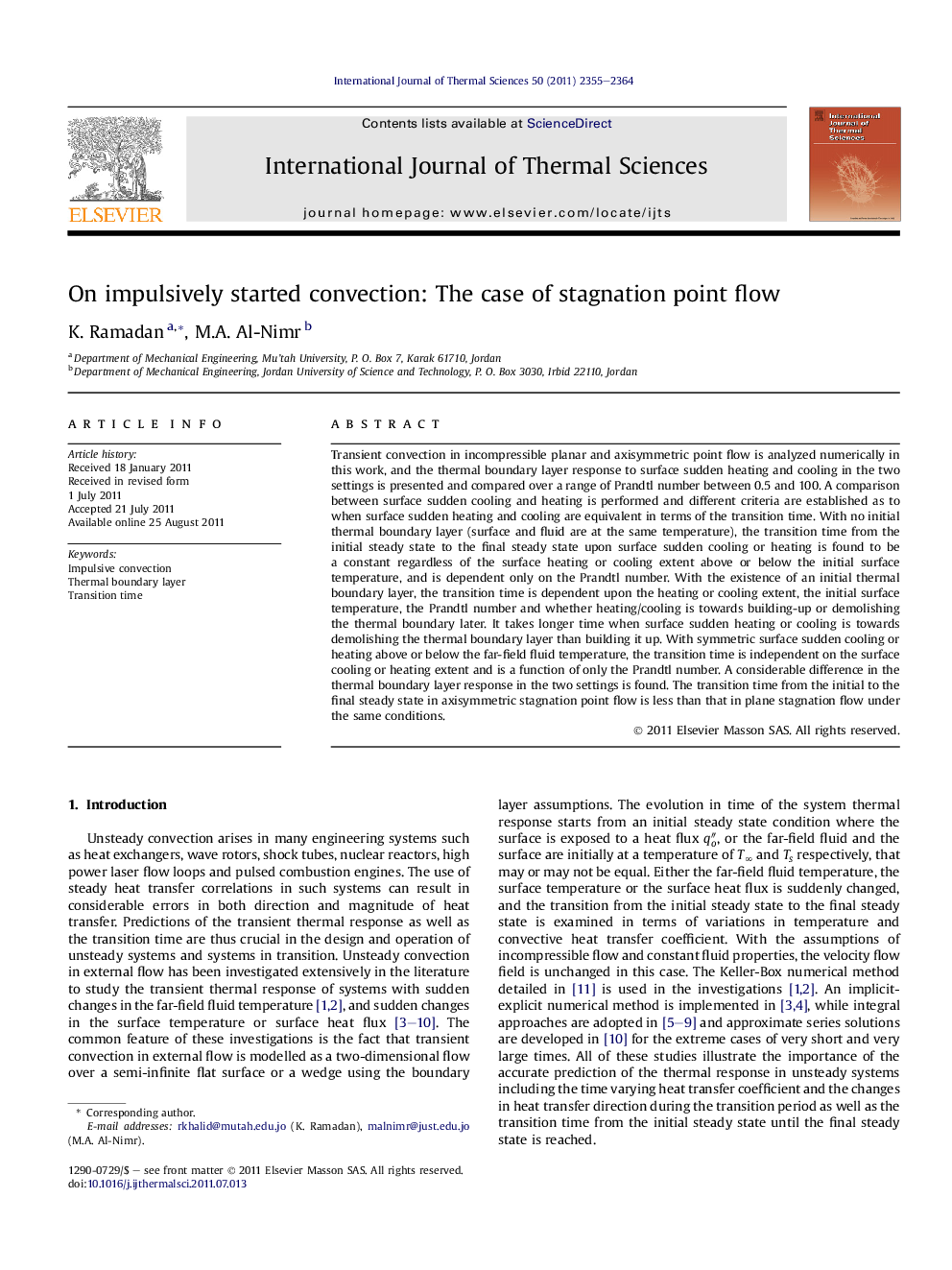| کد مقاله | کد نشریه | سال انتشار | مقاله انگلیسی | نسخه تمام متن |
|---|---|---|---|---|
| 669031 | 1458772 | 2011 | 10 صفحه PDF | دانلود رایگان |

Transient convection in incompressible planar and axisymmetric point flow is analyzed numerically in this work, and the thermal boundary layer response to surface sudden heating and cooling in the two settings is presented and compared over a range of Prandtl number between 0.5 and 100. A comparison between surface sudden cooling and heating is performed and different criteria are established as to when surface sudden heating and cooling are equivalent in terms of the transition time. With no initial thermal boundary layer (surface and fluid are at the same temperature), the transition time from the initial steady state to the final steady state upon surface sudden cooling or heating is found to be a constant regardless of the surface heating or cooling extent above or below the initial surface temperature, and is dependent only on the Prandtl number. With the existence of an initial thermal boundary layer, the transition time is dependent upon the heating or cooling extent, the initial surface temperature, the Prandtl number and whether heating/cooling is towards building-up or demolishing the thermal boundary later. It takes longer time when surface sudden heating or cooling is towards demolishing the thermal boundary layer than building it up. With symmetric surface sudden cooling or heating above or below the far-field fluid temperature, the transition time is independent on the surface cooling or heating extent and is a function of only the Prandtl number. A considerable difference in the thermal boundary layer response in the two settings is found. The transition time from the initial to the final steady state in axisymmetric stagnation point flow is less than that in plane stagnation flow under the same conditions.
► We study transient convection in planar and axisymmetric stagnation point flow.
► System response to sudden changes in surface temperature is analyzed numerically.
► Comparison between system response to sudden heating and cooling is presented.
► Factors influencing system response to sudden heating and cooling are analyzed.
► Criteria to predict system response to sudden temperature changes are established.
Journal: International Journal of Thermal Sciences - Volume 50, Issue 12, December 2011, Pages 2355–2364